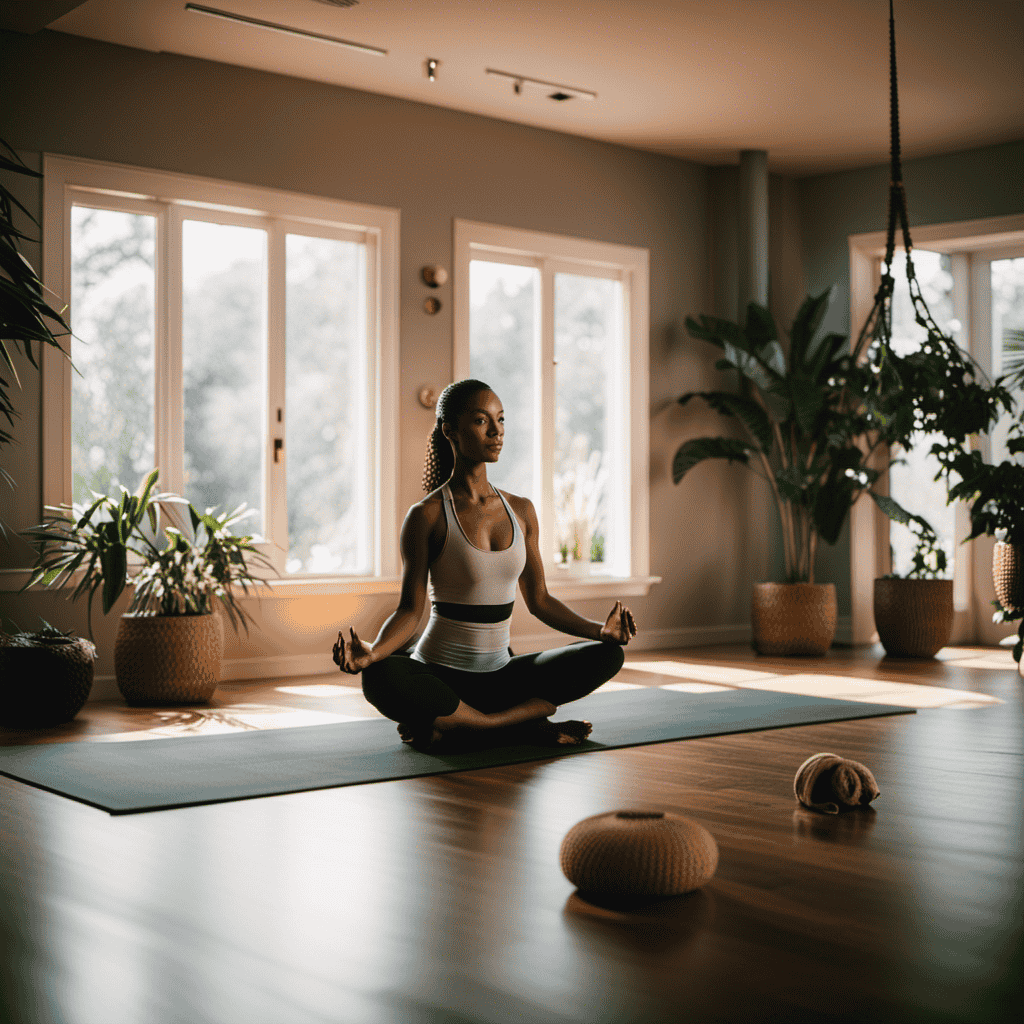Lotus pose, much like a beautiful flower, holds a special place in the heart of yoga enthusiasts. Its different forms bring a range of advantages for our bodies and minds. Whether it’s the Navasana challenging our core with the boat pose or the hip-opening stretch of Marichyasana B, each variation provides a chance for us to improve and become more flexible. Ready to unlock the secrets of Lotus pose? Keep reading to discover why this yoga posture is truly special and beneficial for you!
In this article, we will explore the different forms of lotus pose, discover alternatives, and delve into the Half Bound Lotus Forward Fold. So, let’s embark on a journey of self-discovery as we delve into the enchanting world of lotus pose and its variations.
Key Takeaways
- Lotus Pose variations offer alternatives for those who find Lotus Pose challenging or uncomfortable.
- Practicing Lotus Pose and its variations can prepare the body for more advanced yoga poses and practices such as pranayama and meditation.
- It is important to practice Lotus Pose variations safely and honor individual body limitations to avoid injury.
- Modifying poses and using props can help make Lotus Pose and its variations more accessible and comfortable for different individuals.
Lotus Pose Variations
I’ve learned about various Lotus Pose variations, such as Half Bound Lotus Forward Fold and Bound Lotus Pose. These variations can help lengthen the spine and prepare for pranayama and meditation.
Exploring modifications of Lotus Pose can be beneficial for practitioners at different levels. These variations offer a range of options for those who may find full Lotus Pose challenging or uncomfortable. By modifying the pose, we can still experience the benefits of lengthening the spine and allowing for free breathing.
Additionally, these variations can help cultivate a steady breath and stable mind, making them ideal for those looking to deepen their meditation practice. Furthermore, for individuals who spend long hours sitting in chairs, practicing Lotus Pose variations can provide relief and counterbalance the effects of prolonged sitting.
Overall, exploring different Lotus Pose variations can offer a safe and effective way to work towards the full pose while honoring our individual bodies.
Alternatives to Lotus Pose
There are several alternative seated postures that can be practiced instead of Lotus Pose. These alternatives provide modifications for Lotus Pose and offer their own unique benefits.
Here are four options to consider:
-
Navasana (Boat Pose): This pose strengthens the core and improves balance. It can be a great alternative for those who find Lotus Pose challenging.
-
Virasana (Hero Pose): This posture stretches the thighs and knees while also improving posture. It is a good choice for those who experience discomfort in the knees during Lotus Pose.
-
Ardha Baddha Padma Paschimottanasana (Half Bound Lotus Forward Fold): This variation allows for a deep stretch in the hips and hamstrings, without the full rotation of Lotus Pose.
-
Using a scarf or towel: Placing a folded scarf or towel under the knee can provide support and make Lotus Pose more accessible for those with tight hips or knee issues.
These alternatives allow individuals to modify their practice and still experience the benefits of Lotus Pose variations.
Half Bound Lotus Forward Fold
One option to modify the traditional seated posture is to practice Half Bound Lotus Forward Fold. This variation allows for a deeper stretch in the hips and hamstrings while still providing support for the knees.
To enhance comfort and stability in this pose, using props for knee support can be beneficial. Placing a pillow or folded blanket under the knees can help alleviate any discomfort or strain.
Additionally, modifications for challenging postures can be incorporated into this variation. For example, if Garbha Pindasana or Karandavasana are difficult, practicing Half Bound Lotus Forward Fold can be a great alternative.
Remember to listen to your body and make adjustments as needed to ensure a safe and enjoyable practice.
Pose Dedicated to the Sage Marichi B
Marichi B Pose is a challenging posture that requires a deep twist and strong core engagement. This variation of Marichyasana is named after the sage Marichi and is known for its numerous modifications.
To successfully practice Marichi B Pose, it is important to listen to your body and make necessary modifications. Some modifications for Marichyasana B include using a strap or towel to help reach the bind, sitting on a block for extra support, or bending the bottom leg if the full expression of the pose is not accessible.
Benefits of practicing Marichyasana B include improved digestion, stimulation of the abdominal organs, and increased flexibility in the hips and spine. This posture also helps to strengthen the core and improve overall body awareness.
Bound Lotus Pose
I find Bound Lotus Pose to be a challenging and rewarding posture that requires deep hip flexibility and a strong core engagement. This pose is an advanced variation of Lotus Pose and it can be a great way to deepen your practice and explore your body’s capabilities.
However, it’s important to approach this pose with caution and make modifications to protect your knees. To do this, you can use a pillow or folded blanket for knee support.
Additionally, if you find it difficult to bring both feet into the lotus position, you can start by working on one leg at a time, gradually building up to both legs. Remember to listen to your body and never force yourself into a position that feels uncomfortable or painful.
With patience and practice, Bound Lotus Pose can become a beautiful and fulfilling part of your yoga journey.
Frequently Asked Questions
Can Lotus Pose variations help improve flexibility in the hips and knees?
Lotus pose variations can definitely improve flexibility in the hips and knees. By practicing these variations, you can gradually open up the joints and increase range of motion. This can lead to improved flexibility and a deeper, more comfortable Lotus Pose.
Are there any precautions or contraindications to consider when practicing Lotus Pose variations?
Precautions and contraindications are crucial when practicing Lotus Pose variations. It’s imperative to avoid forcing the legs into the pose to protect the knees. Honoring our bodies, modifying poses, and focusing on breath and stability are essential for a safe practice.
How can props, such as a scarf or towel, be used to assist in finding a more comfortable Lotus Pose variation?
Using props, such as a scarf or towel, can provide support and comfort when modifying lotus pose for individuals with knee or hip injuries. They can be used as spacers to create space and alleviate pressure, allowing for a more accessible variation of the pose.
Are there any modifications or variations of Lotus Pose that can be beneficial for individuals with knee or hip injuries?
Modifications for knee and hip injuries in Lotus Pose variations include using props for support, such as blocks or blankets. These modifications can help alleviate strain and provide stability, allowing for a safe and beneficial practice in injury recovery.
Can practicing Lotus Pose variations help improve focus and concentration during meditation?
Practicing Lotus Pose variations can improve focus and concentration during meditation by enhancing body awareness and improving mindfulness. These variations help cultivate a steady breath and stable mind, creating a conducive environment for deep meditation.
Conclusion
In conclusion, exploring the variations of Lotus Pose and its alternatives has provided me with a deeper understanding of the benefits and possibilities that this seated yoga posture offers.
By incorporating poses like Navasana, Virasana, and the Half Bound Lotus Forward Fold, I have been able to stretch and strengthen my hips and hamstrings while maintaining a steady breath and mind.
Additionally, practicing poses dedicated to the sage Marichi has helped me open my hips and lengthen my spine.
Bound Lotus Pose, although more advanced, has challenged me to find new depths of flexibility and balance.
Overall, these variations have allowed me to personalize my practice and find a variation that feels safe and comfortable for my body.
As I continue to explore Lotus Pose and its variations, I am reminded of the importance of honoring my individual body and using modifications and props when necessary.
By doing so, I can continue to reap the benefits of this ancient practice and cultivate a sense of inner peace and balance in my daily life.









